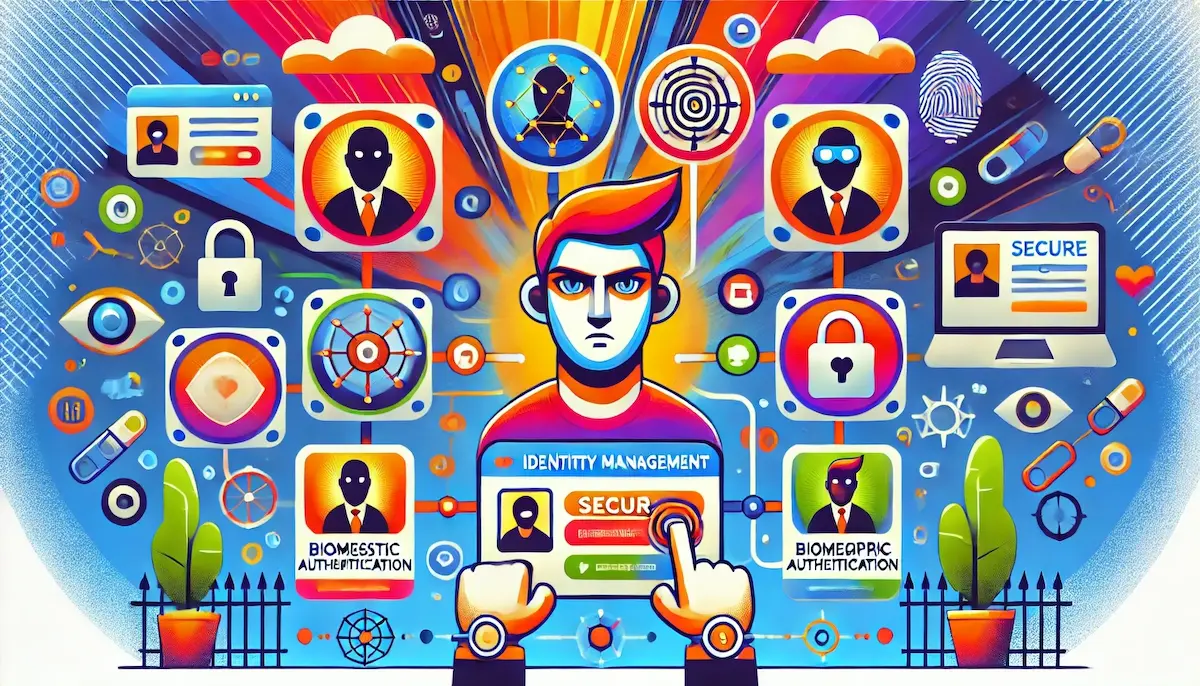Identity Management, often referred to as Identity and Access Management (IAM), is a critical component of cybersecurity that focuses on ensuring the right individuals have appropriate access to resources in an organization. IAM systems provide a framework for managing digital identities and controlling user access to critical information and systems.
What is Identity Management?
Identity Management involves the administration of individual identities, their authentication, authorization, and privileges within or across system and enterprise boundaries. The primary goal is to enhance security and efficiency by managing how users gain access to systems, networks, and data.
Key Components of Identity Management
Authentication
Authentication is the process of verifying the identity of a user, device, or system. It ensures that the entity requesting access is who or what it claims to be. Common authentication methods include:
- Passwords: The most traditional form, though increasingly supplemented or replaced due to vulnerabilities.
- Multi-Factor Authentication (MFA): Combines two or more independent credentials, such as something the user knows (password), something the user has (smartphone), and something the user is (biometric verification).
- Biometric Authentication: Uses physical characteristics like fingerprints, facial recognition, or retinal scans.
Authorization
Authorization determines what an authenticated user is allowed to do. This involves granting permissions to access certain resources or perform specific actions based on the user’s role and privileges. Key concepts include:
- Role-Based Access Control (RBAC): Assigns permissions to users based on their role within the organization.
- Attribute-Based Access Control (ABAC): Grants access based on user attributes (e.g., department, job title) and environmental conditions (e.g., time of day).
User Provisioning
User provisioning involves creating, managing, and deactivating user accounts and permissions as needed. This includes:
- Onboarding: Setting up new user accounts and assigning initial access rights.
- Maintenance: Regularly updating user permissions to reflect changes in roles or responsibilities.
- Offboarding: Deactivating user accounts and revoking access rights when users leave the organization.
Single Sign-On (SSO)
SSO allows users to access multiple applications or systems with one set of login credentials. This improves user convenience and security by reducing the number of passwords users need to remember and manage.
Identity Governance
Identity governance ensures compliance with policies, regulations, and standards related to user identities and access rights. It involves:
- Access Reviews: Regular audits of user permissions to ensure they are appropriate and up-to-date.
- Policy Enforcement: Implementing and enforcing access policies and procedures.
- Reporting and Analytics: Monitoring access activities and generating reports for compliance and security purposes.
Benefits of Identity Management
Enhanced Security
By ensuring that only authorized users have access to critical resources, IAM systems reduce the risk of unauthorized access and data breaches. MFA and other advanced authentication methods further enhance security.
Improved User Experience
IAM systems streamline the login process with features like SSO, reducing the number of credentials users need to manage. This enhances productivity and user satisfaction.
Regulatory Compliance
IAM helps organizations comply with regulations that require strict control and monitoring of access to sensitive information. It ensures that access policies are consistently applied and that access activities are properly logged and audited.
Operational Efficiency
Automating identity management processes reduces the administrative burden on IT staff. Efficient provisioning and de-provisioning of user accounts ensure that users have timely access to the resources they need.
Challenges in Identity Management
Complexity
Implementing and managing an IAM system can be complex, especially in large organizations with diverse IT environments and user populations. Ensuring seamless integration with existing systems and applications requires careful planning and execution.
User Resistance
Users may resist changes to authentication processes, especially if they perceive them as inconvenient. Balancing security and user convenience is a key challenge for IAM systems.
Scalability
As organizations grow, their IAM systems must be able to scale to accommodate an increasing number of users and devices. This requires robust infrastructure and efficient processes.
Compliance
Ensuring ongoing compliance with evolving regulations and standards can be challenging. IAM systems must be regularly updated and audited to meet these requirements.
Future Trends in Identity Management
Zero Trust Security
Zero Trust Security principles, which assume that threats can come from both inside and outside the network, are increasingly being integrated with IAM. This involves continuous verification of user identities and strict access controls.
AI and Machine Learning
AI and machine learning are being used to enhance IAM systems by improving threat detection, automating user provisioning, and providing more accurate access recommendations.
Decentralized Identity
Decentralized identity solutions use blockchain technology to give individuals control over their own digital identities, reducing reliance on centralized identity providers and enhancing privacy and security.
Conclusion
Identity Management is a cornerstone of modern cybersecurity, providing the tools and processes necessary to ensure secure and efficient access to resources. By implementing robust IAM systems, organizations can enhance security, improve user experience, ensure regulatory compliance, and achieve operational efficiency. As technology evolves, IAM systems will continue to adapt, incorporating new trends and innovations to meet the growing demands of cybersecurity.
Blockfine thanks you for reading and hopes you found this article helpful.
